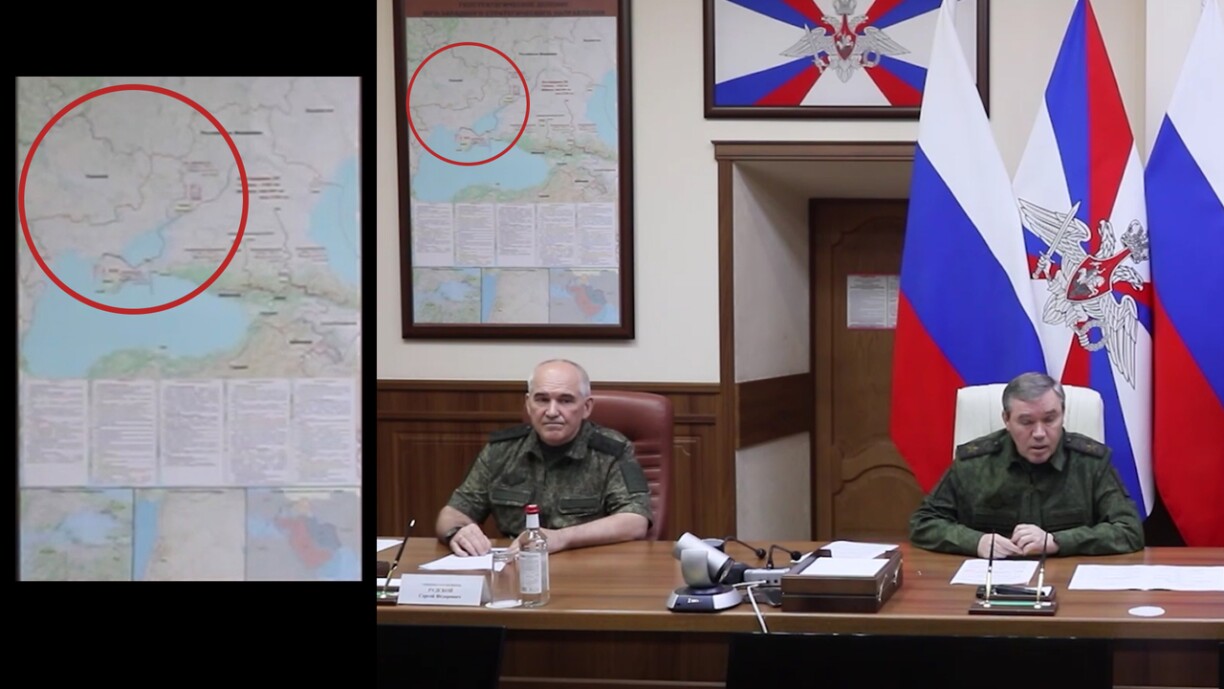
Are we witnessing the return of Novorossiya? Judging by the recent press conference held by the Russian army on 30 August 2025, one could easily be led to believe so.
In this final part of our three-part series on the origins of the war in Ukraine, the concept of Novorossiya once again takes centre stage. In the first instalment, we explored the historical background of the idea; in the second, we examined Crimea, the separatists, and the road to Minsk ceasefire talks, highlighting how Novorossiya has been invoked as a supposed justification for the attempted secession of southern and eastern regions of Ukraine.
On 30 August, the Russian Defence Ministry released a video press conference featuring a map that appeared to divide up Ukraine. During the briefing, the Chief of the General Staff of the Russian Armed Forces, Valery Gerasimov, spoke about the progress and outcomes of Russia’s summer offensive, with the striking map hanging prominently in the background.
On the map, a bold line tears through Ukraine, severing Kyiv from the Black Sea. For keen observers, the image is strongly reminiscent of the borders outlined in the Kremlin’s so-called Novorossiya doctrine.
Dr Andreas Umland, an analyst at the Stockholm Centre for Eastern European Studies (SCEEUS) at the Swedish Institute of International Affairs, offered his interpretation of the map.
While Dr Umland detects a tactical and strategic dimension to Gerasimov’s move, he emphasises that the cultural and historical concept of Novorossiya continues to shape Russia’s foreign policy and played a role in Russia’s 2014 invasion of Donbas.
To fully understand the complex notion of Novorossiya, which has evolved in meaning over time, Dr. Umland also explained the origins of the concept. According to him, it is relatively recent, linked to the southern expansion under Catherine the Great, when the Russian Empire pushed into what is now southern Ukraine, displacing or russifying the Cossacks and Crimean Tatars who lived there.
Dr Umland explained that the term has resurfaced repeatedly in Russian nationalist historiography, particularly during the annexation of Crimea in 2014 and again in September 2022, when Russia annexed the regions of Kherson, Zaporizhzhia, Donetsk, and Luhansk. He made clear, however, that Novorossiya remains a fluid concept, with different actors including different regions within it.
Today, the idea is used as a justification for annexation, based on its one-time inclusion in the Tsarist Empire, Dr Umland explained. He believes that for Russia’s political elite, reclaiming Novorossiya carries symbolic weight: Catherine conquered these lands, only for them to be lost after the Soviet collapse. Among ordinary Russians, however, the concept of New Russia carries far less importance, as the ultimate aim for many is that all of Ukraine should once again fall under Russian control, Dr Umland stated.
Looking at the war today, the frontline largely runs through the territories the Kremlin has labelled Novorossiya, though this is also a consequence of Russia’s failed large-scale offensive against Kyiv.
Before the war, Novorossiya was mostly confined to nationalist intellectual circles. Its significance grew in 2014, when attempts were made to rally separatist movements in the relevant oblasts, efforts that ultimately only succeeded in Donbas, in part due to direct Russian infiltration.
Dr Umland also stresses that most Russian pan-nationalists, who envision Russia as larger than the current Federation, do not restrict their ambitions to Ukraine’s southeast. They also seek the re-annexation of central Ukraine, including Kyiv. In this light, Novorossiya serves as a situational tool for justifying annexations of specific territories. In Vladimir Putin’s official state ideology, however, its role is minor compared to Russkiy Mir (“the Russian world”).
This doctrine asserts that everything considered “Russian” belongs together, encompassing Ukraine, Belarus, parts of Kazakhstan, and sometimes even the Baltic states.
For the self-proclaimed “people’s republics” of Donetsk and Luhansk, the term Novorossiya has held particular significance, especially because of the Rossiya (“Russia”) element, according to Dr Umland. He added that the separatist leaders never aspired to create unrecognised breakaway states like Transnistria in Moldova or South Ossetia in the Caucasus, as their clear objective was to become part of Russia itself.
Dr Umland stated that it is equally important to note, however, that within these territories only a minority of the population genuinely supported full secession from Ukraine. As a historical and ideological narrative, Novorossiya therefore functions as a form of Russian legitimation for annexing Ukraine’s southeastern regions, according to him. Within those regions themselves, support for the idea in 2014 appeared limited, and as he underlines, it certainly did not amount to a majority view.
Nevertheless, the idea of Novorossiya, and the territories associated with it, continues to influence Russia’s Ukraine policy today, whether as an ideological symbol or, as in Gerasimov’s map, a strategic-military framing of the war.